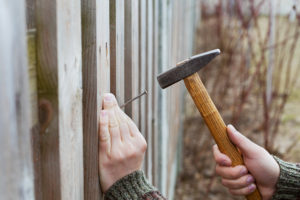
Maintaining a sturdy and well-kept fence is essential for the security and aesthetics of your property. Over time, fences may suffer wear and tear due to weather conditions, age, or unexpected damage. In this guide, we’ll explore effective tips for repairing and restoring a fence, ensuring it remains a functional and attractive feature of your outdoor space.
Assessing the Damage
Before diving into the repair process, assess the extent of the damage. Identify broken or loose boards, damaged posts, or sections that have shifted. Understanding the specific issues will guide your repair strategy. Take note of any signs of rot, rust, or insect damage, as addressing these underlying issues is crucial for long-term fence health.
Gathering the Right Tools and Materials
Equipping yourself with the right tools and materials is key to a successful fence repair. Common tools include a saw, hammer, nails or screws, level, and a pry bar. Depending on the type of fence, you may need specific materials such as replacement boards, posts, brackets, or concrete for securing posts. Having everything on hand streamlines the repair process.
Securing Loose or Broken Boards
Loose or broken boards compromise both the functionality and appearance of a fence. Start by securing loose boards with additional nails or screws. For broken boards, carefully remove the damaged section, and replace it with a new board of the same size and material. Ensure a snug fit and secure the replacement board with appropriate fasteners.
Fixing Damaged Posts
Sturdy fence posts are crucial for the overall stability of the structure. If a post is damaged or leaning, begin by removing any soil around the base to assess the extent of the issue. For minor leaning, use a level to straighten the post, and secure it with concrete for added stability. Severely damaged or rotted posts may require complete replacement.
Addressing Rust and Corrosion
Metal fences, especially those in humid or coastal areas, are susceptible to rust and corrosion. Use a wire brush to remove surface rust, and apply a rust converter to prevent further corrosion. For severely rusted sections, consider replacing damaged metal components. Applying a fresh coat of rust-resistant paint adds a protective layer and enhances the fence’s appearance.
Repairing Chain Link Fences
Chain link fences are durable but may experience damage to the mesh or framework. Repair small tears in the mesh using fence ties or a patch kit. For bent or damaged framework, use a pry bar to straighten or replace the affected sections. Ensure that tension wires are appropriately tightened to maintain the structural integrity of the chain link fence.
Staining or Painting for Aesthetic Appeal
Once the structural repairs are complete, consider staining or painting the fence for enhanced aesthetic appeal and protection. Choose a high-quality outdoor paint or stain that complements your property’s style. Properly sealed and finished fences are more resistant to weathering, extending their lifespan and reducing the frequency of repairs.
Setting a Regular Maintenance Schedule
Prevention is key to avoiding extensive fence repairs in the future. Set a regular maintenance schedule that includes inspections, cleaning, and minor repairs. Addressing issues promptly helps prevent small problems from escalating into major repairs. Regular maintenance also allows you to identify and address potential concerns before they compromise the fence’s integrity.
Supporting Community Initiatives
As you invest time and effort into repairing your fence, consider supporting community initiatives focused on environmental conservation and outdoor beautification. Participate in projects that aim to create green spaces and enhance the overall aesthetics of your community. Visit repair a fence to explore opportunities for contributing to community-driven initiatives.
In conclusion, a well-maintained fence not only provides security and privacy but also contributes to the overall appeal of your property. By following these tips and incorporating regular maintenance into your routine, you’ll ensure that your fence remains a durable and attractive feature of your outdoor space for years to come.










